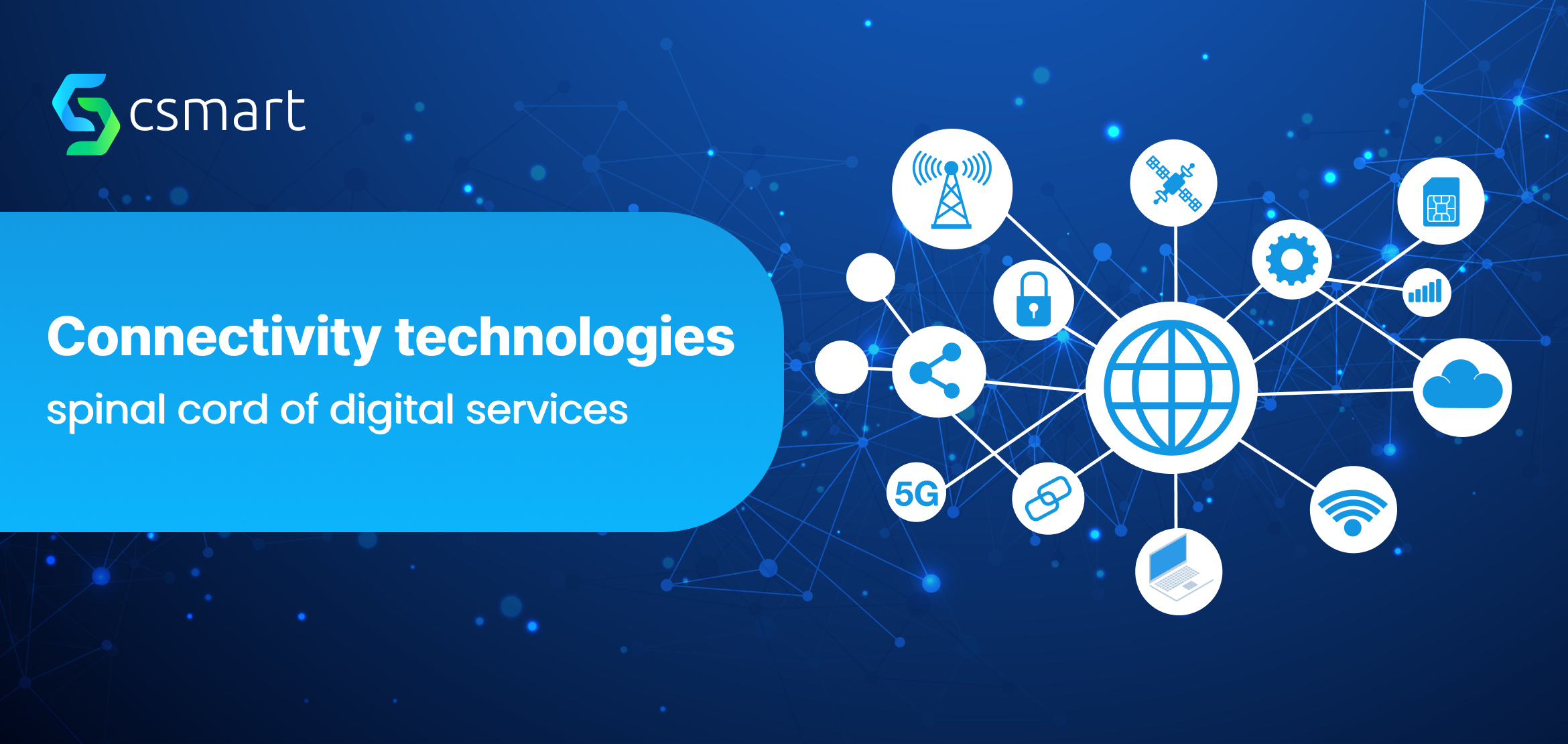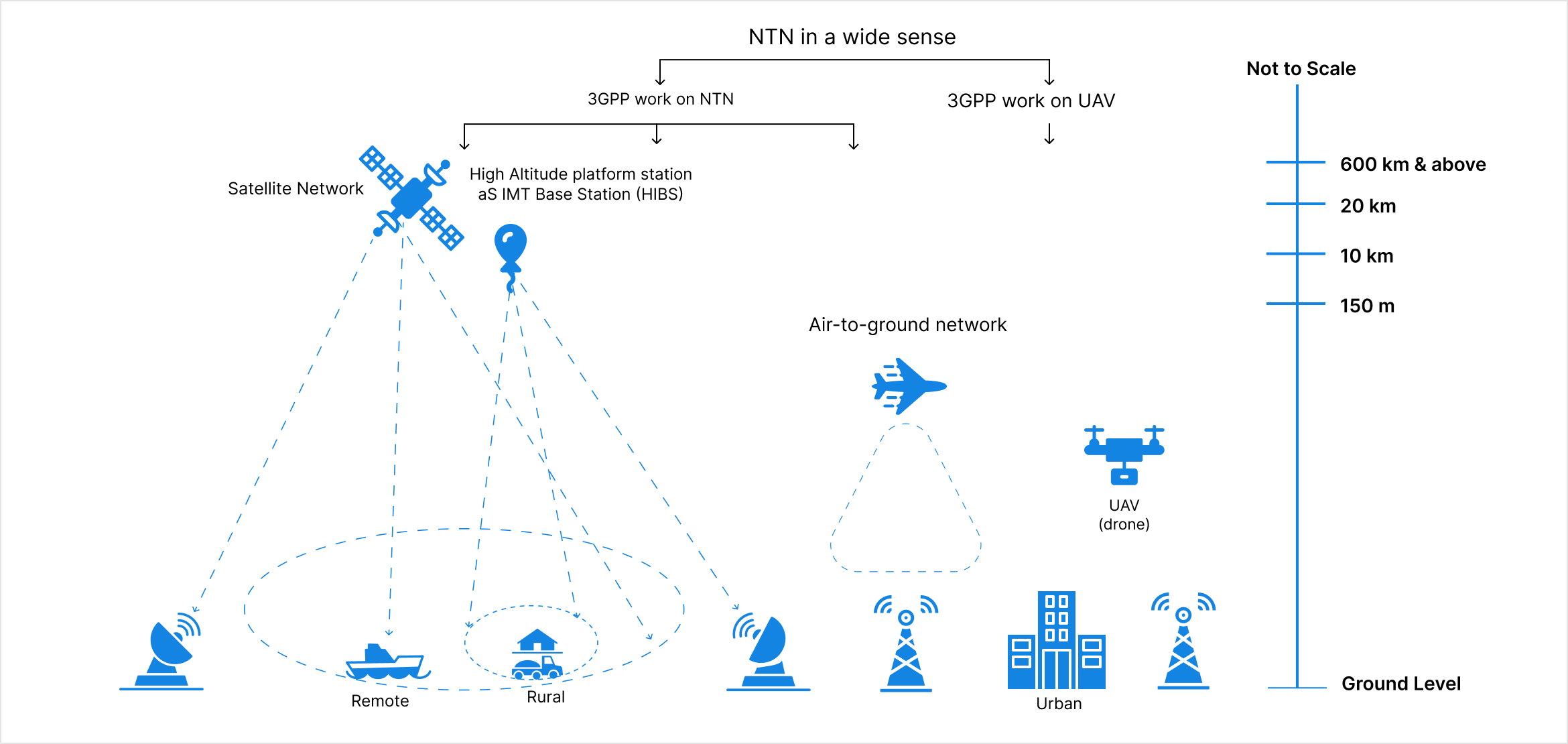- 5G
- FTTx
- LTE
- Digital services
- Satellite communication
- IoT
Connectivity technologies – spinal cord of digital services
09 May 2024 • 4 Mins Read

As the world moves towards digital services, the quality (and ubiquity) of network access has major implications for service adoption in social and business scenarios. In the world of broadband connectivity, the domains of GPON and Metro Ethernet in FTTx or LTE and 5G in the case of wireless are relatively well known. However, they are present only in urban centres where population density and affordability allow the business case to justify the capital and operational expenditure. Over a third of the world’s population live in areas with little to no access to connectivity, let alone high-quality broadband. Network coverage here represents a significant growth opportunity for telecom operators and enterprises. This topic covers some emerging last mile technologies which represent the potential to do just that.
Non-Terrestrial Networks (NTN)
NTN has become an umbrella term for any network that involves non-terrestrial flying objects. The NTN family includes satellite communication networks, high altitude platform systems (HAPS), and air-to-ground networks. 3GPP Release 17 has incorporated specifications for NTN to be integrated into terrestrial networks to support both consumer and industrial use cases. The figure below illustrates the various scenarios necessitating the integration of NTN technologies with terrestrial ones. Two of these technologies are described briefly.

Direct to Device (D2D) / Satellite-to-Phone
This approach promises to supply satellite connections to millions of smartphone customers through their existing phones – meaning, no new device is necessary. Besides consumer needs, agricultural, industrial and scientific applications can also benefit from this kind of coverage. This is a service delivered via Low-Earth Orbit (LEO), but requires the use of terrestrial spectrum, involving partnerships with existing operators or applying for a new spectrum licence. The alternative approach is to use only satellite spectrum (e.g. Globalstar, Iridium), which requires new devices. In both cases, the technology is in its infancy and the real value to users vs. cost will determine which or both will become prominent.
High Altitude Platform Station (HAPS) / HIBS (HAPS as IMT Base Stations)
ITU Radio Regulations (RR) define HAPS as “radio stations located on an object at an altitude of 20-50 kilometres and at a specified, nominal, fixed point relative to the Earth.” HAPS is not a new concept, but it has become more viable due to technological advances in solar panel efficiency, battery energy density, lightweight composite materials, autonomous avionics, and antennas. HAPS can support various applications including mobile broadband in rural areas, Internet of Things (IoT), public safety, autonomous factory, and disaster relief. There are three variations of HAPS, all of which are Unmanned Aerial Vehicles (UAV) – aeroplanes, airships and balloons. Google Loon, which shut down in 2021, is an example of the last category, offering LTE Services. Specific frequency bands were approved by the World Radiocommunication Conferences (WRC) - 47/48 GHz, 38-39 GHz, 31-31.3 GHz, 27/31 GHz, 6 GHz, 2 GHz.
In conclusion, the role of NTN technologies is going to increase substantially in terms of 5G networks and digital services, especially in regions where a combination of factors limits the use of terrestrial networks.